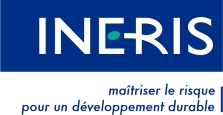Frequently asked questions
Several options would be available for the substitution of phenolic resins based on octylphenols:
- rosin derivatives;
- coumarone-indene resins
- aliphatic resins
- terpenes such as α or β-pinene
- resins based on 4-tert-Butylphenol
Some alternatives may not provide the same quality guarantees than phenolic resins based on octylphenols (in particular, for the manufacture of tires).
Many alternatives to OPEs used as surfactants are reported for most uses. Ethoxylated fatty alcohols seem to be the most common solution but there are other alternatives : Ethylene Oxide / Propylene Oxide (EO/PO) copolymers, sugar-based surfactants (alkylpolyglucoside) and some fatty acid (for instance 12-hydroxystearic acid for some foaming applications). Some specific information is proposed for the tanneries and textiles, detergents and phytosanitary sectors:
• Tannery and textiles
There are several options for the replacement of OPEs for uses in textiles and tanneries. Typical substitutes are ethoxylated fatty alcohols or other alcohols such as Guerbet alcohol. Solutions based on EO/PO copolymers are also available.
• Detergents
The ethoxylated alkylphenols have been replaced in domestic detergents for several years by linear or branched alkyl ethoxylated fatty alcohols. This substitution continues in industrial applications, with the use of the same ethoxylated fatty alcohols or selective mixtures of base alcohols and ethoxylated alcohols. In addition to the alcohol ethoxylates alternatives, ranges of EO/PO copolymers and alkylpolyglucosides are developed and marketed.
• Paintings
Alternative surfactants based on EO / PO copolymers are available.
• Phytosanitary
Substitutes to OPE used as coformulant of phytosanitary products can be found in ethoxylates of castor oil, in EO / PO and alkylpolyglucosides.
For more details, refer to the document : Technical and economic data on chemical substances in France: octylphenols and ethoxylates (in French).
There are several alternatives, namely:
• Ethoxylated alcohols
Substitutes for nonylphenol ethoxylates in the industrial, institutional and domestic detergents sectors are generally mixtures of anionic and nonionic surfactants : mainly ethoxylated alcohols mixed with fatty acids and derivatives, fatty amines, hydrocarbons unsaturated.
• Glucose surfactants
Another alternative for NPEs is the use of carbohydrates such as alkylpolyglucosides or glucamides. They are moderate foaming agents and excellent emulsifiers. They are well suited for washing textiles, especially when combined with other nonionic surfactants and anionic surfactants, with which they can have synergistic effects.
• Other surfactants
Some surfactants may substitute for specific applications, for example, silicone surfactants are used in the production of polyurethane foam while naphthalene compounds are used in photographic developing solutions. In other cases, the NPEs may be replaced by a mixture of nonionic surfactants or a mixture which comprises anionic or amphoteric surfactants.
For more details, refer to the document : Technical and economic data on chemical substances in France: nonylphenols and ethoxylates (in French).
These are main authorized uses that may give rise to emissions into the environment:
* Nonylphenols:
- intermediate for the production of nonylphenol ethoxylates;
- production of some plastics;
- production of phenolic oximes.
* Nonylphenol ethoxylates:
- imported articles made of leather and textiles until 03/02/2021;
- paper pulp imported and paper products imported;
- in the energy sector : in fuel additives or in hydrocarbon recovery fluids;
- production of many plastics as a dispersant additive used in the process (emulsion polymers): ABS, ESBR, ENBR, PVC, PTFE, PVA, PMMA, polyacrylates for paints. Plastics that would be the most affected by the use of nonylphenol ethoxylates are polyvinyl acetate and acrylic acids;
- manufacture of tires and gums;
- paint, inks and coatings in emulsifiers, binders, hardeners, thickeners and pigment pastes;
- adhesives as an emulsifier;
- in the wood industry;
- spermicides;
- in the pharmaceutical industry as an emulsifier;
- pesticides and biocides when national marketing authorization have been granted before 17 July 2003;
- in products of wastewater treatment.
* Octylphenols:
- intermediate in the production of phenolic resins (one of which is found in the tire industry) or formaldehyde resins;
- production of octylphenol ethoxylates.
* Octylphenol ethoxylates:
- polymer production (styrene-butadiene), used in tires;
- manufacture of textiles and leather;
- pesticides formulation;
- production of water-based paints.

